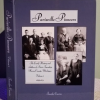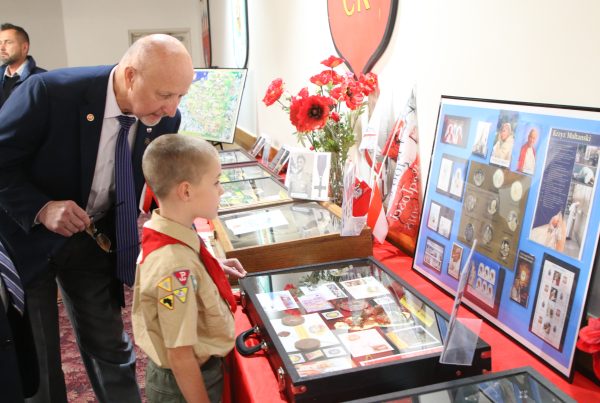By John Radzilowski
The art of making fine musical instruments takes skill, dedication, and patience. The very best violins in the world, antiques made by masters such as Antonio Stradivari or Guiseppe Guarneri, produce unparalleled tones and are prized by musicians and music lovers. They can fetch auction prices in the tens of millions of dollars.
For most Polish immigrants to America and for most Poles living under the partitions in the nineteenth and twentieth centuries, even if they could not afford a Stradivarius, the love of music drove a huge demand and interest in musical instruments. Before the radio and before recorded music, people played and sang at home and with friends. Many musicians were self-taught and quite a few achieved high levels of excellence. Composers of the day earned income from sales of sheet music and people bought musical scores and played them at home with instruments they bought and sometimes made themselves.


While Italian, Czech, or German instrument makers have a well-deserved reputation, Poland too had its musical craftsmen. Among the best was Władysław Baczyński, known to some experts as the “Polish Stradivarius.” Baczyński was born in 1866 in a village near Bielsko-Biała in southern Poland, in what was then the Austrian-controlled partition. His family was able to provide him with an education and connections good enough to secure a civil service post with the Austrian state railway in Kraków, where he married his first wife. He later moved to another railway posting in Stanisławowo in 1894. During this period, he learned the craft of violin making on the side with master Gustav Häussler in Kraków and appears to have been friendly with both musicians and instrument makers. He made his first violin in 1894. Tragically, his wife and their two children died of tuberculosis by 1898, though he remarried shortly thereafter. Around this time, he turned to instrument making full time with Häussler, primarily violins, but also cellos and violas. He also repaired instruments and tuned pianos.
In 1904, his friend, the Jewish violinist Henryk Kessler, persuaded him to come to New York, where Kessler had already settled. With good recommendations from Häussler, Baczyński immediately secured a position with German-American luthier Heinrich Knopf, perhaps the best violin maker in America at that time. Baczyński soon developed his own reputation, especially among Polish immigrants in the USA, who valued quality instruments and were able to save a little extra money from their jobs to afford an excellent violin made by a fellow Pole.
After a couple years in America, his wife wanted to return to Europe. The family relocated once again, this time to Lwów, where Baczyński opened his own establishment. He quickly established an excellent reputation with testimonials coming from Polish, Czech, German, and Hungarian musicians. He was connected to the Lwów Conservatory and was often consulted on repairs for antique violins. He also continued to receive orders from Polish immigrants in the USA. According to a biographical article in the violin magazine The Strad (Jan. 2025) his instruments were described by members of the Czech Ševčík-Lhotský String Quartet as having “a very beautiful, full sound and although new, they sound like old, worn instruments.”
In independent Poland, Baczyński was honored in the city of Lwów and nationally as well as a preeminent craftsman. His shop was awarded contracts for instruments for students in music schools and in years before his death in 1935 he taught many students who would become master luthiers themselves. He has been described by some experts as “the Polish Stradivarius.”
While Poles in America clearly appreciated the work of masters like Baczyński, his work was not widely available and the demand for instruments was significant. In most Polonia communities, there were specialized shops selling instruments and sheet music of all kinds, such the Sajewski Music Store on Milwaukee Avenue in Chicago, owned by Władysław H. Sajewski, which was a fixture of Chicago Polonia for decades.
At the same time, many Polish immigrants had great skill with wood working and could teach themselves the art of making instruments. One example was Jan Ochałek an immigrant from near Jasło who settled in Hamtramck (and the author’s great grandfather). Having taught himself to read in both Polish and English, Ochałek built his own home and his own set of tools and then taught himself violin making from a book. He made many instruments which he sold or sometimes bartered. He also taught himself to play and wrote his own music, which he played at dances for family and neighbors.


Although few of Polonia’s homegrown craftsman reached the level of the “Polish Stradivarius,” the love of music and skill to make instruments worthy of playing was common and testimony to the cultural achievements of our immigrant ancestors.









